
OBJECTIVE OF 3RD MILLENNIUM CHESS: Checkmate the enemy King.
NUMBER OF PLAYERS: 2
MATERIALS: 3rd Millennium Chess by 3mcreations
TYPE OF GAME: Board Game
AUDIENCE: 7+
OVERVIEW OF 3RD MILLENNIUM CHESS
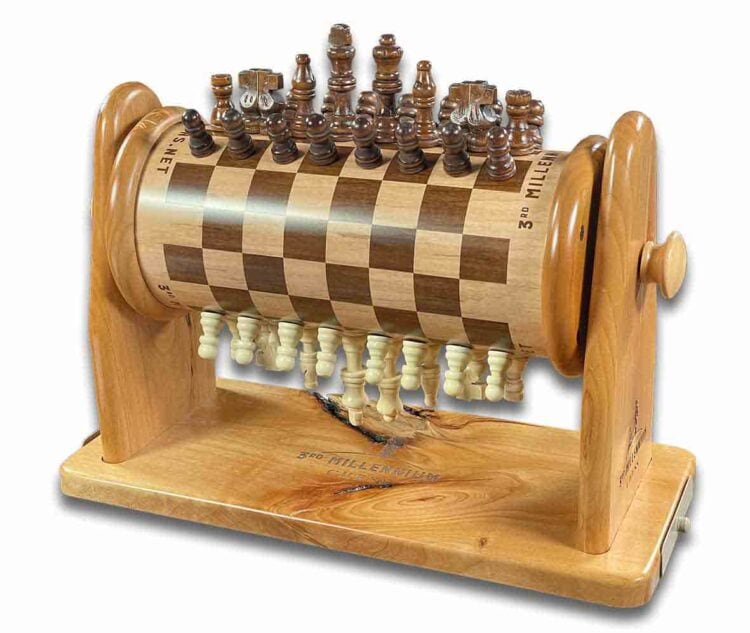
3rd Millennium Chess plays the same as regular chess with the following differences. Check out the regular rules of chess here for a refresher. There are 2 main differences. The first, and most noticeable, is that the game is played on a three-dimensional cylinder. The 2nd is that you play with double-sided/splitable knights instead of traditional knights.
SETUP
Set out the cylinder board between the two players. There are 2 king lines on the cylinder, indicated by the squares that are colored into thirds.
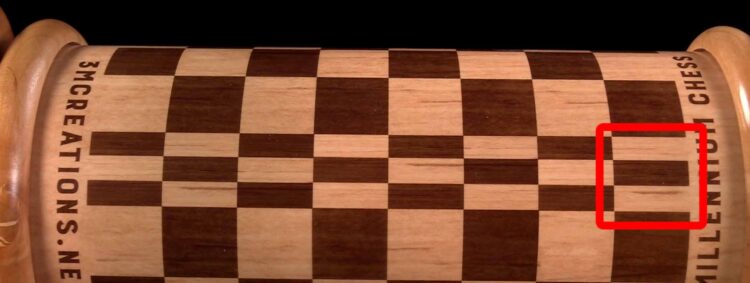

Set up the higher-rank, lighter colored, pieces on the king line with the lighter square on the far right like you normally would, except with double-sided/splitable knights instead of traditional knights.
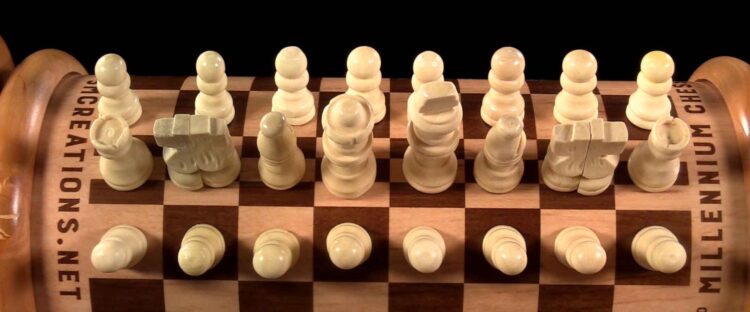
Place the lighter pawns on both sides of that king line. On the exact opposite side of the cylinder, set up the darker colored pieces on the other king line in the same way.
GAMEPLAY
- You may only rotate the cylinder during your turn.
- Pawns must always move in the direction away from their own king line.
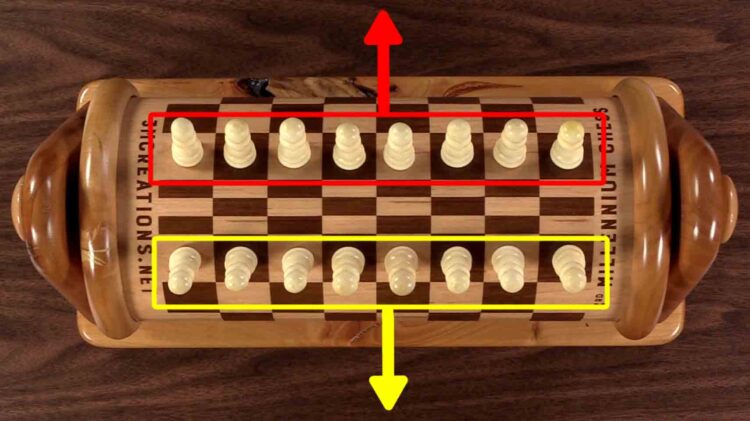
- Pawns promote like normal when they reach their opponent’s king line.
- En Passant is allowed like normal.
- Higher rank pieces can move any direction on the board and can cross over both player’s king lines an unlimited number of times.
- Pieces may move completely around the board in a single move so long as they do not end their move on the same square they started on, they must stop on a different square.
- Castling is allowed like normal.
- The double-sided/splitable knight is two knights combined into one.
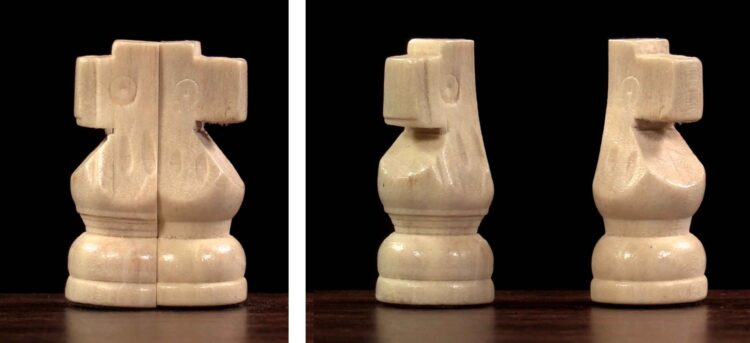
- These knights may move in tandem with each other in a single move, like a traditional knight, or you may choose to move only one of them and split them into two separate knights.
- Split knights move like a normal knight and can rejoin with their other half.
- (Knights can only join with their original half; they may not join with any other knight.)
- Once rejoined, the double-sided knight can move in tandem again or split again.
- (There is no limit to the number of times a knight can join or split.)
- If you capture a joined knight, then both pieces of that knight are removed from the board, but, if you capture a split knight, then only that split piece is removed from the board.
- Pawns may promote to a double-sided/splitable knight if you want, but not to a traditional knight.
END OF GAME
The first player to checkmate their opponent, wins!
- Comprehensive Guide to the Board Game Go (weiqi, baduk) - January 23, 2024
- Are Creative Suites Changing Gaming - October 30, 2023
- Crowning the Kings of Solitaire: GameRules Recognizes Solitaired and MobilityWare as top Solitaire Games - October 20, 2023